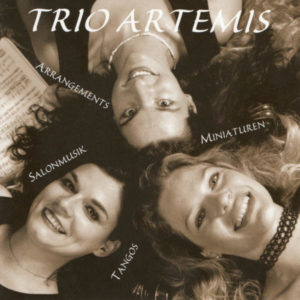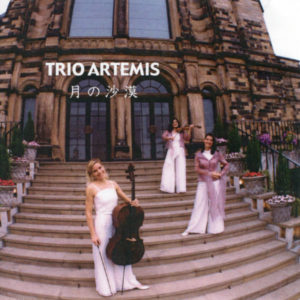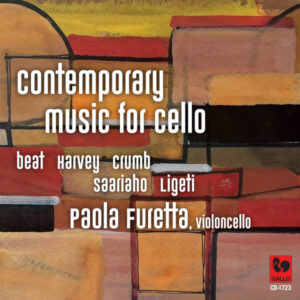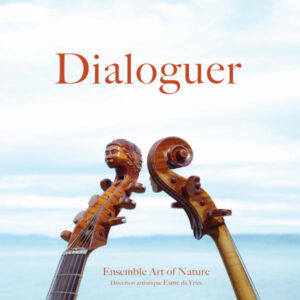Certain prejudices concerning Mendelssohn must be cleared away. His music, we are told, is the direct expression of a happy, wealthy and carefree life. This existence, however, was only seemingly happy, and although Mendelssohn belonged to the Romantic age, he nevertheless professed the classical ideal.
The happy life of a brilliant German Jew, with a talent not only for music but also for painting and philosophy… this is hardly the stuff to inspire biographers. But it would be exaggerated to claim that Mendelssohn’s life was cloudless. This hypersensitive man went through some severe crises. The last one, due to the death of his sister in 1847, cost him his life: and yet he had been married to the daughter of a parson from Neuchâtel, Cécille Jeanrenaud, for ten years, had four children and nourished a secret passion for a singer, Jenny Lind… what mystery is hidden behind this deadly despair? He was tried physically, too: a long-standing paralysis of the knee, cholera… Finally, not even his career was a series of continual successes: his only opera, The Wedding of Camacho, was a failure, and he was mortified at not being allowed to succeed his professor, Zelter, at the Singakademie in Berlin. He went through periods of depression which inevitably followed spells of intense activity. If his life is seen as a sequence of travels, receptions, rides, drawing-room concerts, parties, family performances, congratulations, and pleasant conversations, it is easy to forget the energy he displayed as a conductor, pianist, composer, and organizer. Under his influence, Leipzig became the musical centre of Europe. He fought for fair remuneration for the musicians of the Gewandhaus Orchestra, he conducted numerous new works, including some famous productions — the first revival of the St. Matthew Passion by Bach, the world premiere of Schubert’s Ninth Symphony, generally considered unplayable — and he wrote 121 works, not counting the unpublished ones, although he lived only two years longer than Mozart.
Mendelssohn continued to profess the classical ideal, in contradiction to the opinions of the “musicians of the future” like Liszt and Wagner, of whom he said: “According to them, music has to be elevated to the height of a science, as required by the demands of progress; it must represent personages and events psychologically. In my view, a composer does not have to express pure ideas, but must combine notes harmoniously: we should not expect from music what we obtain from books.” This so very “bourgeois” attitude of his was resented among the members of the Wagnerian circles who set the tone for almost a century. Nowadays it is thought that Mendelssohn anticipated the modern attitude of respecting the music of the older masters: without imitating them, Mendelssohn restored the fame of Bach, Handel, Haydn, and Mozart at a time when Hummel was considered classical. And we can only render homage to this enemy of all systems who claimed: “I like to take music seriously. I do not believe that I am free to compose anything without being entirely pervaded by my subject. It seems to me that this would be a sort of lie.” Wagner himself called him “the greatest specific musician since Mozart.”
First Integral Recording
The compositions for violoncello and piano in Mendelssohn’s work have been neglected: this complete recording is the first to appear. It fills a serious gap, as there is no doubt that these are masterpieces and even constitute a culminating point in the whole violoncello repertoire. This collection, moreover, clearly accents Mendelssohn’s development from the end of adolescence to maturity. It is a happy circumstance that this first complete phonographic recording was done in Switzerland, Mendelssohn’s favourite country.
Mendelssohn wrote the eight Variations Concertantes in 1828 for his younger brother Paul, who played the cello. It is profoundly German music, revealing all the temperament of the composer of the Overture to A Midsummer Night’s Dream. The cello plays an essential part in its transparency, its impact, and lyricism. But as so often in his sonatas, Mendelssohn kept the lion’s share for himself, at the piano.
Ten years later, Mendelssohn published his Sonata No. 1 in three movements. The Allegro vivace is characteristic of his generous lyricism; the central movement has more of the quality of a melancholic scherzo than a slow piece: this is the most original trait of Mendelssohn’s style. With the expansiveness of the Allegro assai, the work is brought to a brilliant close.
In 1843, the Sonata No. 2 appeared, whose elegiac or enthusiastic Romanticism permeates the initial Allegro. The second movement springs from one of those scherzo-like inspirations of which Mendelssohn held the secret. The Adagio exhales a naïve fervour in a spirit close to that of Novalis. Sparkling, spontaneous, full of charm and fantasy, the Finale recalls certain passages of virtuosity in the concertos; but the sureness of the effects is always placed at the service of deep musical feeling.
The Song Without Words, Op. 109, composed in 1845, crowns both the works for violoncello and piano and the 49 collections of the same name which Mendelssohn wrote for the piano: typically German transpositions of the lied, condensing intimate and delicate impressions that form a short musical poem of luminous expressiveness.












